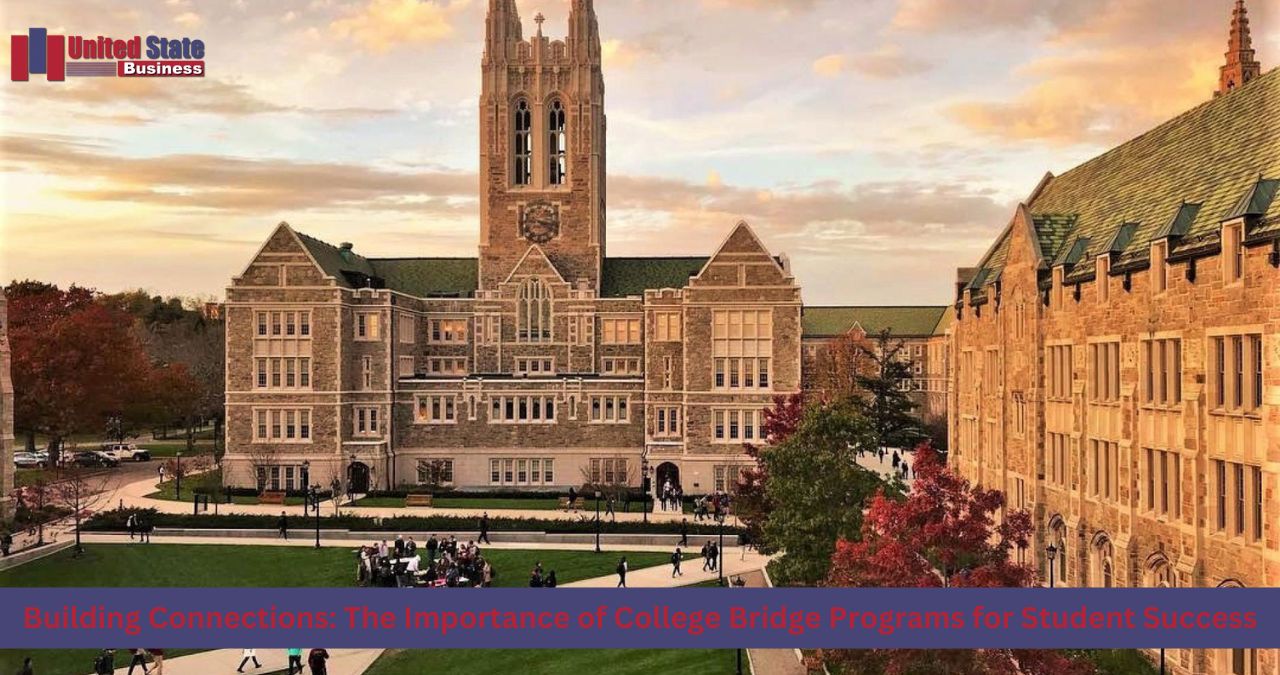Transitioning from high school to college can feel like jumping into the deep end without a life jacket. For many students, especially those who are first-generation or come from underrepresented backgrounds, this leap can be daunting. Enter college bridge programs—a lifeline designed to ease that transition and set students up for success. These programs offer essential support, resources, and connections that help navigate the complexities of higher education.
Whether it’s developing academic skills or building meaningful relationships with peers and mentors, bridge programs provide a critical foundation for student achievement. As we explore their importance in fostering successful transitions to college life, you’ll see how these initiatives are transforming futures one student at a time.
Benefits of Bridge Programs for First-Generation and Underrepresented Students
Bridge programs serve as a lifeline for first-generation and underrepresented students, offering them essential support during a crucial transition period. These initiatives provide tailored resources that cater to the unique challenges these students face as they navigate higher education.
By fostering an inclusive environment, bridge programs empower students to build confidence and academic skills. They create opportunities for participants to engage in workshops focused on study strategies, time management, and financial literacy—key areas often overlooked in traditional settings.
Furthermore, these programs facilitate networking with peers who share similar backgrounds. This connection not only nurtures friendships but also establishes a supportive community where students can thrive together.
Access to mentorship from faculty and alumni enhances this experience even further. Personalized guidance helps demystify the college landscape while motivating students to pursue their goals with determination. All of these factors contribute significantly to student success rates among those traditionally underserved by educational systems.
How Bridge Programs Help with Academic Preparedness
Bridge programs play a crucial role in enhancing academic readiness for college students. They provide tailored courses that focus on essential skills such as critical thinking, writing, and mathematics.
These programs often introduce students to the rigors of college-level coursework before they officially enroll. This early exposure helps ease the transition from high school or community college to university life.
Additionally, bridge programs frequently incorporate study strategies and time management techniques. These tools empower students to tackle their future classes with confidence.
Students also benefit from personalized mentoring during this preparatory phase. Experienced educators guide them through challenges and set achievable goals.
By fostering an environment centered on academic growth, bridge programs lay a strong foundation for long-term success in higher education.
Connecting Students to Campus Resources and Support Systems
Bridge programs serve as a vital link between students and the myriad resources available on campus. These programs introduce first-year students to essential tools that can enhance their academic journey.
From tutoring centers to mental health services, bridge initiatives ensure that students are aware of what’s at their disposal. This knowledge is crucial for navigating college life successfully.
Moreover, these programs often include workshops tailored to specific needs. For example, sessions on financial aid applications or study strategies empower students with practical skills and confidence.
Peer mentorship also plays a significant role in fostering connections. Through interactions with upperclassmen, new students gain insights into how to effectively utilize resources they may not have known existed.
Building this foundation helps ease the transition into college. It promotes a proactive approach towards seeking help when needed—key for long-term success.
Fostering a Sense of Community and Belonging
Bridge programs are more than just academic initiatives; they create a supportive community for students. By bringing together individuals from diverse backgrounds, these programs cultivate connections that last beyond the classroom.
Students often find comfort in shared experiences. They navigate challenges together, whether it’s adjusting to college life or tackling coursework. This camaraderie fosters a sense of belonging that’s crucial during transitional periods.
Mentorship plays a pivotal role as well. Upperclassmen and faculty become not only guides but also advocates who understand the unique hurdles first-generation and underrepresented students face. Their support helps build confidence and resilience.
Social activities further strengthen this community bond. From workshops to casual meet-ups, opportunities abound for students to network and form friendships. These connections can provide emotional support essential for their overall success in college.
Feeling part of something larger encourages persistence and inspires achievement among participants in bridge programs.
Success Stories: Real-Life Examples of Bridge Program Graduates
Maria, a first-generation college student, entered a bridge program unsure of her place in academia. Through mentoring and workshops, she gained confidence and skills. Today, she is pursuing a degree in engineering, inspiring others along the way.
Then there’s Jamal, who struggled with academic challenges before joining his school’s bridge initiative. The personalized tutoring he received transformed his approach to learning. Now a leader in student government, Jamal advocates for more resources for underrepresented students.
Sarah found community through her bridge program after relocating from another state. She formed lasting friendships that helped ease her transition into university life. With support from peers and advisors alike, she has thrived academically while also leading initiatives promoting diversity on campus.
Each story highlights how college bridge programs can be life-changing experiences that empower students to achieve their goals and dreams.
The Future of College Bridge Programs and Their Impact on Student Success
The landscape of college bridge programs is evolving rapidly. As educational institutions recognize their value, more initiatives are being developed to cater to diverse student needs.
Advancements in technology will enhance how these programs operate. Online resources and virtual workshops can make participation easier for students from various backgrounds.
Additionally, partnerships with community organizations are likely to expand. These collaborations can provide even greater support networks for first-generation and underrepresented students.
As the demand for inclusivity grows, colleges will focus on tailored experiences that address specific challenges faced by different communities. This personalized approach could significantly boost retention rates and academic success.
With ongoing investment in bridge programs, the future looks promising. They stand as a vital component of higher education reform aimed at fostering equity and access for all students.
Conclusion: Investing in the Future through Bridge Programs
The landscape of higher education is continually evolving, and college bridge programs are at the forefront of this transformation. They serve as vital stepping stones for many students, particularly those who may face additional challenges in their academic journey. Investing in these programs means investing in a brighter future for countless individuals.
These initiatives not only enhance academic preparedness but also connect students with essential resources and support systems that can make all the difference. The sense of community fostered within bridge programs creates an environment where students feel valued and understood. This nurturing atmosphere encourages them to strive for success.
As we look ahead, it’s clear that college bridge programs will play an increasingly important role in promoting equity within higher education. By supporting diverse student populations, these programs help create a more inclusive academic landscape. As such investments continue, it becomes evident that they pave the way for generations of successful graduates ready to contribute positively to society.
Embracing college bridge initiatives today lays the foundation for tomorrow’s leaders—a commitment worth making.



